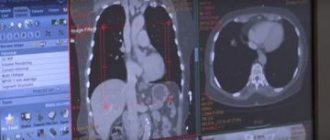Among the diseases that often occur in children from infancy to adolescence, the most common is conjunctivitis. It is characterized by an acute inflammatory process that affects the mucous membrane of the eye, that is, the conjunctiva.
Most often, the cause of infection is a simple neglect of the rules of personal hygiene, when a child gets an infection by rubbing his eyes with unwashed hands.
What is conjunctivitis?
Conjunctivitis is an inflammatory process that occurs in the human body, which can be triggered by various pathogenic factors: viruses or bacteria, as well as fungi. In some cases, the disease is of an allergic nature and manifests itself as the body’s immune response to contact with an irritant.
This disease provokes the appearance of local symptoms, namely: redness of the eyes and eyelids, accumulation of mucus and pus, itching and burning sensation in the eyelid area. It is worth noting that this disease is quite common in pediatric practice, the frequency of its detection is about 30% of the total mass of eye diseases.
In order to understand the mechanism of development of the lesion, it is worth considering the principles of the structure of the conjunctiva. The conjunctiva is the mucous membrane of the eye, lining the back surface of the eyelids and the front surface of the eyeball to the cornea. Such an element performs the most important functions responsible for obtaining a picture of normal quality. The lacrimal gland, which is responsible for moisturizing the eyes, is also located in the conjunctiva. Conjunctivitis not only spoils the appearance of the eyes, but also provokes spontaneous lacrimation, which provokes some deviations in the functioning of the visual analyzer.
Causes
The main cause of the disease is the spread of bacterial infection. It can enter the eyes in the following cases:
- touching the eyes and the area around them with dirty hands or other objects;
- infectious diseases of the ENT organs and oral cavity that spread to neighboring tissues;
- disturbance of the microflora in the eye area, when any negative factor causes the proliferation of streptococcal and staphylococcal microflora;
- pathology of the lacrimal sac, as a result of which bacteria accumulate inside it;
- contact with a foreign object in the eyes, for example, in a strong wind, particles of dust and dirt can spread to the mucous membrane.
These are the main reasons why the disease can develop. The doctor needs to identify them in order to eliminate the possibility of developing chronic conjunctivitis.
What conjunctivitis looks like in children with photos
The symptoms of conjunctivitis vary depending on the causative factor that provokes the development of the disease. Depending on the reasons that provoke the inflammatory process, bacterial, viral, fungal, chlamydial, allergic and dystrophic conjunctivitis are distinguished.
It should be noted that bacterial conjunctivitis can be provoked by various pathogenic microorganisms, including pneumococci, gonococci, staphylococci and streptococci. Viral conjunctivitis can be caused by adenovirus infection and the herpes virus. Chlamydial conjunctivitis in children develops quite rarely, because its appearance is caused by chlamydia, which often manifests its activity on the genitals of adults. Often, the disease, manifested as a result of the pathogenic activity of chlamydia, develops in newborns, in the first few days after passing through the birth canal. In this case, the child will have a copious accumulation of yellow mucus in his eyes.
With an allergic type of lesion, symptoms such as purulent discharge from the eyes are not visible. In most cases, the disease manifests itself with acute itching and burning, and redness of the white of the eye is possible. This reaction may be a response to contact with pet hair, solvents, paints and household dust.
According to the type of course and the nature of morphological changes, conjunctivitis can be divided into:
- purulent – pathology occurs with the formation of pus;
- catarrhal – pus does not form with this pathology, mucus is released abundantly from the patient’s eye, and lacrimation often occurs;
- papillary develops as an allergic reaction, which is a response to medications; small grains form on the mucous membrane of the eye in the area of the inner eyelid;
- hemorrhagic - this type is characterized by the manifestation of multiple hemorrhages in the white of the eye;
- membranous - often manifests itself against the background of acute respiratory viral diseases, the child’s eye “shines” at the same time;
- follicular - follicles form on the mucous membrane of the eye.
In most cases, the pathological process affects both eyes at once, but in some situations the pathology can affect only one of the organs. The patient must remember that, despite this, therapeutic manipulations should be carried out in relation to both eyes - drops and eye ointments should certainly be applied to the conjunctival sac
The list of signs characteristic of the inflammatory process includes the following:
- swelling and redness of the eyelids;
- formation of mucous secretion;
- itching;
- burning;
- profuse lacrimation;
- photophobia;
- blepharospasm; decreased visual acuity.
With a purulent pathological process, patients often find it difficult to open their eyes in the morning due to their sticking together.
It is worth remembering that the clinical picture and main symptoms of the pathology can vary significantly depending on the causative agent. Treatment should only be carried out by an experienced pediatric ophthalmologist. If redness of the eyes and other symptoms are accompanied by an increase in body temperature, an infectious process may develop. In this case, the main goal of therapy will be to relieve inflammation and increase the protective properties of the body.
What types are there
Inflammation of the eye mucosa can be caused by:
- viruses;
- bacteria;
- allergens;
- chemical or physical factors.
Conjunctivitis in children is often epidemic in nature; it is a contagious disease transmitted by airborne droplets and contact, through toys, household items, and dirty hands.
Depending on the cause of occurrence, conjunctivitis is classified into the following types and forms:
Allergic conjunctivitis + photo
- herpetic - caused by the herpes virus, rarely isolated, usually accompanied by damage to the oral mucosa, genital organs, and can become chronic with weakened immunity;
- adenoviral – as a rule, it is epidemic in nature, occurs in children attending kindergarten or school, in most cases occurs against the background of adenoviral respiratory tract infection and after it;
- allergic – the cause is contact with an irritant allergen, usually this form is periodic and can go away on its own as the irritant is eliminated. An allergic reaction can be triggered by external factors - dust, plant pollen, animal hair, as well as some medications, household chemicals or decorative cosmetics;
- bacterial – the causative agents are gonococci, streptococci, staphylococci, pneumococci. Infection occurs through dirty hands, household items, water, or from a source of bacterial infection at another location, for example, as a complication of acute pharyngitis;
- chlamydial or blenorrheal - most often diagnosed in newborns. Infection occurs when a mother with chlamydia or gonorrhea passes through the birth canal.
According to the flow, acute and chronic forms of the disease are distinguished. Chronic conjunctivitis includes Morax-Axenfeld conjunctivitis, the main and typical symptom of which is the accumulation of purulent discharge in the corners of the eyes. The acute form in most cases occurs after an infectious disease of other organs, with weakened immunity, or microtrauma of the mucous membrane of the eye. Improper use of contact lenses and neglect of visual hygiene rules can also cause an acute form of the disease.
Those who use contact lenses need to take extra care and regular care of their eyes, optical devices and all accompanying instruments to prevent infection.
Sometimes the development of conjunctivitis is associated with chronic diseases of other internal organs, which at first glance are not related to the visual apparatus. For example, disturbances in the digestive tract and helminthic infestations provoke such eye disease. As a result, all the reasons come down to one common thing: weakening of the immune system due to illness, lack of care, or injury.
Note: when the membrane covering the visible part of the sclera of the eyeball becomes inflamed, the blood vessels become more pronounced and noticeable. Because of this, the mucous membrane and sclera become very red. For this reason, conjunctivitis is popularly called “pink eye.”
The first signs of conjunctivitis in a child
It is quite simple to identify conjunctivitis in a child; its first signs are visible to the naked eye. Swelling and redness of the conjunctiva is often observed. Children suffer from such an inflammatory process quite acutely, and the disease is more severe in them than in adults. This feature is due to the fact that it is not always possible to eliminate negative factors in this case - children often aggravate the course of the disease by constantly touching the inflamed eye.
The list of main symptoms indicating the development of conjunctivitis in young children can be presented as follows:
- swelling;
- redness of the eyes;
- formation of crusts on the eyelid;
- eyelid gluing;
- copious discharge of pus from the eyes;
- lacrimation;
- refusal of food;
- increased tearfulness and irritability.
Older children may identify the following complaints:
- vision during illness becomes blurred and foggy;
- sensation of a foreign body in the eye, manifested by constant itching;
- discomfort;
- burning.
The best solution is to contact an ophthalmologist in a timely manner. The doctor will be able to determine the true cause of the inflammatory process and select the optimal treatment to quickly get rid of such symptoms. Trying to cure conjunctivitis in a child on your own is not a good idea. In some cases, the disease may manifest itself due to increased intracranial pressure. Symptomatic therapy in this case is not effective, and conjunctivitis is only an alarm bell indicating a deep problem.
Types and forms of the disease
The following types of conjunctivitis are distinguished:
- viral _ It occurs in more than 50% of patients and, in the absence of complications, lasts from 7 to 10 days, it can be: herpetic - characterized by the presence of a unilateral process, acute and prolonged onset, complicated course, adenoviral - characterized by increased temperature, inflammation of the nasopharynx, enlarged lymph nodes;
- bacterial _ It can be transmitted between children on playgrounds, in schools and kindergartens, and is severe and long-lasting (from 10 to 14 days). Depending on the causative agent of the disease, bacterial conjunctivitis can be: pneumococcal, staphylococcal, streptococcal, diphtheria, acute epidemic, etc.;
- allergic . It is often bilateral and lasts more than a month. It can be: nutritional (food), infectious-allergic, seasonal, helminthic (parasitic), and also spring catarrh - a chronic inflammation of the mucous membrane, which worsens in the warm season.
Symptoms of conjunctivitis
Often conjunctivitis in children progresses systematically. In most cases, symptoms of the disease appear gradually. At the initial stage, mild redness is observed, and then the process intensifies, lacrimation and pus discharge are observed.
The clinical picture may look like this:
- swelling of the upper and lower eyelids;
- profuse lacrimation;
- photophobia;
- feeling of sand in the eye;
- a veil before the eyes;
- purulent discharge;
- gluing of eyelashes with pus;
- formation of crusts in the corners of the eyes;
- pain when moving the eyes;
- visual impairment.
The child becomes quite restless, constantly rubbing his eyes and crying. Older children often limit their complaints to a general deterioration in health and become less active. Due to a decrease in the body's protective properties, the disease can cause complications.
Types of conjunctivitis
In medical terminology, there are three types of conjunctivitis. The classification is based on the nature of the pathogen, namely:
- allergen;
- bacteria;
- viruses.
Often the nature of the disease is determined during an examination by a doctor, but if necessary, an analysis of eye discharge is prescribed. The effectiveness of treatment of conjunctivitis in adults and children directly depends on the correctness of the diagnosis.
Types of conjunctivitis
Conjunctivitis is a fairly common ophthalmological pathology that can affect one or both eyes. In the absence of timely treatment, the pathological process may worsen, and children with weakened immune systems may develop blepharoconjunctivitis and keratoconjunctivitis.
Allergic conjunctivitis
Allergic damage is the patient’s body’s response to the influence of various external stimuli, which can be various factors:
- dust;
- wool;
- pollen of some plants;
- toxic smoke.
In this case, the disease can occur in acute and chronic forms. Chronization of the pathological process is possible if contact with the irritant is constant. In acute cases, the disease manifests itself seasonally, for example, in the summer, at the time of flowering of certain plant species. The pathological process should not be ignored. The risk of developing bronchial asthma and other equally dangerous complications cannot be excluded.
Adenoviral conjunctivitis
In ophthalmological practice, such a pathology is called pharyngo-conjunctival fever. The pathological process can be provoked by active microorganisms. The pathological process often spreads from the upper respiratory tract. The pathology is spreading rapidly in children's institutions.
Bacterial conjunctivitis
The bacterial process is the result of the pathogenic activity of different types of bacteria. With timely intervention, the pathology is successfully treated and does not cause dangerous consequences. This type of disease is characterized by rapid development. The pathological process progresses at lightning speed. In the absence of timely drug intervention, the pathology takes on a chronic form, which is characterized by a change from remission to relapse.
Viral conjunctivitis
The cause of a viral infection is often a decrease in the body’s immune properties. The pathology progresses systematically, the incubation period ranges from 7 to 12 days. The carrier of the virus does not experience negative symptoms and can infect others without knowing about their own disease. The viral process is simpler than the bacterial one; purulent complications are not observed. Symptoms of inflammation are eliminated using local agents.
Purulent conjunctivitis
A characteristic symptom for this pathological process is the formation of purulent exudate. With this disease, the patient experiences constant itching and burning. Treatment, provided you contact a doctor in a timely manner, is not burdensome and the prognosis is favorable. The causative agents of purulent inflammation are often streptococci, staphylococci and pneumococci. Infection often occurs when the patient does not comply with personal hygiene rules.
Prevention measures
If a child gets conjunctivitis more than once every six months, this indicates serious problems:
- the disease has become chronic and it will be much more difficult to cure it completely;
- there may be an immune deficiency (hypovitaminosis, parasite infection);
- personal hygiene rules are regularly violated.
To rule out all of the above options, you need to contact your pediatrician and undergo the appropriate tests. You also need to monitor the baby’s behavior, whether he has a habit of rubbing his eyes with unwashed hands, and whether toys and personal belongings are kept clean.
Treatment of conjunctivitis
Treatment of conjunctivitis must be complete; eliminating the symptoms of the disease using local agents is not always possible, because the flora that provokes the pathology is often resistant to the antibacterial spectrum.
You should not act on your own. The child must be shown to the doctor, having previously limited himself to providing first aid. If the diagnosis can be confirmed independently and conjunctivitis can be characterized as viral or bacterial, you can use Albucid eye drops. For allergic conjunctivitis, first aid ends with taking antihistamines.
After a medical examination and confirmation of the diagnosis of viral and bacterial conjunctivitis, the child’s eyes can be washed with a solution of furatsilin. To prepare it, 1 tablet of antibacterial agent is dissolved in 500 ml of water. The frequency of washing is 3 times a day. After eliminating the symptoms, the manipulation is repeated in the morning and evening. The duration of the course of exposure is no more than 7 days.
The basic rules that ensure complete treatment can be presented as follows:
- use a separate napkin for each eye;
- you should not use eye patches, they are an ideal place for the proliferation of pathogenic flora;
- You should not use traditional medicine methods to treat inflammation in a child; it is better to give preference to drops prescribed by a doctor;
- It is important to use antibacterial ointments correctly; the composition is placed behind the lower eyelid;
- Before dropping drops or applying ointment, the composition should be warmed in the palms of your hands for several minutes;
- if the child resists, you should not use force, it is better to have a positive attitude, crying can aggravate the situation;
- Before carrying out the manipulation, parents should thoroughly wash their own hands and the hands of the child; such simple recommendations will help prevent re-infection;
- You should not touch the eye with a pipette or the dropper tip from the bottle, the instrument can become a site for pathogenic activity and the composition will lose its medicinal properties.
In most cases, the treatment regimen for bacterial conjunctivitis in children is as follows:
- Rinse with Furacilin solution - 3 times a day.
- Apply Tetracycline or Erythromycin ophthalmic ointment – 2 times a day.
- Instillation of Levomecithin or Albucid drops – 3 times a day.
It is worth observing the interval between these manipulations.
Advice from Dr. Komarovsky
Komarovsky advises contacting pediatricians in the following situations:
- the disease occurs in children under 1 year of age;
- your health does not improve within 2 days;
- photophobia is present;
- there are complaints of pain in the eyes;
- Blisters form on the skin of the upper eyelid.
Komarovsky recommends staying at home when treating any form of conjunctivitis, with the exception of allergic conjunctivitis. You can return to kindergarten or school after complete recovery, when there are no problems with your eyes for 2 days.
The doctor considers purulent conjunctivitis to be the only indication for local use of antibiotics. Drops are used more often, ointments less often, because they retain antibacterial activity longer.
Symptoms
Seeking medical help is mandatory in the following cases:
- Swollen, stuck together eyelids, blisters on the upper;
- Inflammation of the eye;
- Deterioration of vision;
- Sharp pain;
- Heavy lacrimation;
- Crusts, eyelash gluing;
- Feelings of itching, cutting;
- Excitement, anxiety;
- Sleep disorders.
Conjunctivitis may also be accompanied by symptoms of pharyngitis and rhinitis.
Stages of conjunctivitis
All inflammatory processes go through the following stages:
- Penetration of infection into the mucous membrane, through blood or upon contact, a foreign object affects the cells, as a result of which inflammatory processes are triggered.
- The development of clinical symptoms, the immune system is actively involved in the process, after a foreign object enters the body, the release of active components begins, the process is limited only to the eye cavity.
- Recovery - clinical manifestations, symptoms gradually disappear - this phenomenon is observed with favorable developments; with reduced immunity, complications may occur.
- Incubation period - its duration depends on the pathogen, on average its duration is 7-10 days, less often -14.
The incubation period of viral conjunctivitis is 5-7 days, after the lapse of time the child becomes infectious, the disease is easily transmitted from an infected child to a healthy one.
After the completion of the incubation period, the second stage of the disease begins, the pathology has characteristic symptoms.
Signs of the disease:
- Lacrimation - occurs in 98% of cases, persists throughout the course of the disease, decreases at night or after instilling drops. For three days the patient experiences severe discomfort.
- The discharge from the eyes is light in color, sometimes becomes bloody, and turns yellow.
- Redness - the vessels become noticeably red, in severe cases the redness is very pronounced, sometimes the whites of the eyes turn completely red.
- Photophobia - the child cannot open his eyes during the day, pain, increased lacrimation manifests itself under the influence of bright rays. Improvement in well-being is observed in the dark.
- The discharge of pus is not always observed; the symptom is most common among children infected with bacterial forms of the disease. Conjunctivitis affects both eyeballs at the same time, pus is released throughout the day. The use of antibacterial drops will help to reduce clinical manifestations; in severe cases, antibiotics are prescribed.
- Increased temperature - most often rises to 37.5-39 degrees (in severe cases). The child suffers from deterioration in health, weakness, babies become capricious, sleep can bring temporary relief. The feeling of sand, a foreign object in the eyes, occurs in 80% of cases.
Causes of conjunctivitis at 2 years of age
There are many different reasons why conjunctivitis can form at 2 years of age:
- disruption of the composition of the normal microflora of the eye, due to which the number of staphylococcal and streptococcal microflora increases, forming suppuration;
- penetration of a new type of bacteria into the eyes, for example, chlamydia, gonococcus, pneumococcus, which leads to bacterial conjunctivitis;
- penetration into the eyes or into the entire body of a viral pathogen (adenovirus, herpes, influenza, parainfluenza), which affects 1 or both eyes at once;
- development of an allergic reaction in front of the eyes, which may be due to flowering plants, house dust, household products, chemicals;
- penetration of a large or small foreign body into the eyes, which leads to mechanical damage to the conjunctiva, it becomes inflamed, and subsequently the condition may be complicated by the addition of a bacterial infection;
- proliferation of fungus in the eyes, which can form as a result of improper antibiotic therapy or due to immunodeficiency.
For each type of cause that caused the disease, there is a separate treatment. Therefore, the doctor must not only diagnose conjunctivitis, but also identify its first cause.
Diagnostics
When examining a patient, the ophthalmologist additionally conducts a survey in order to obtain the most complete information about the nature of the disorders in the body. The presence of purulent discharge from the eyes indicates the presence of a bacterial infection, but only laboratory testing can differentiate bacterial conjunctivitis from viral conjunctivitis, complicated by the addition of a secondary bacterial infection.
Laboratory research, which allows us to identify the type of pathogen, allows us to further clarify the form of the disease, which is necessary for prescribing effective therapy:
- Catarrhal. Occurs when the pathogenic activity of microorganisms present in the body increases, against the background of a sharp decrease in immunity.
- Pneumococcal. It develops when pneumococcal bacteria come into contact with the mucosa. The spread of infection is of a domestic nature; you can become infected through direct contact with a patient or using his things.
- Diphtheria. This form is considered a complication of diphtheria; eye damage is caused by the corresponding pathogen.
- Diplobicillary. Infection occurs by airborne droplets. The pathological activity of the diplobacillus is highly intense. This form of conjunctivitis can quickly become chronic.
- Blennoreynuyu. It is registered in newborns infected with gonococcal bacteria while passing through the birth canal.
During a personal examination of the patient, the ophthalmologist clarifies the presence/absence of signs of the development of concomitant diseases. Suspicion of the presence of another infectious pathology in the body requires referral to an appropriate specialist, for example, an otolaryngologist or dentist, for additional examination.
Signs and characteristics in children
It is usually not difficult to determine conjunctivitis in a 2-year-old child, since the course of the disease is accompanied by pronounced symptoms. The child exhibits the following signs:
- staining the conjunctiva of the inflamed eye red;
- swelling of the eyelids and their itching;
- yellowish-green purulent discharge from the eyes;
- photophobia;
- increased lacrimation;
- sticking of the eyelids in the morning after sleep.
Along with the specific signs of conjunctivitis, the child may experience increased weakness, decreased appetite, and increased fatigue. With this disease, body temperature usually does not rise, but the severity of symptoms is largely determined by what form of pathology the child suffers from.
When the first symptoms of conjunctivitis appear, it is recommended to show the child to a specialist who will prescribe the necessary tests. Based on their results, the causes of the disease will be determined and effective treatment will be selected.
I understand the reasons for the development of conjunctivitis
The ophthalmologist in our clinic, as it turns out, is in great demand; in the age of computer technology, the problems of eye diseases in children must be growing exponentially. But nevertheless, we went to see a doctor and the doctor determined the nature of the disease in my child based on external signs. Initially, there could be several reasons for the occurrence of conjunctivitis
- weakened immune system;
- allergy;
- hypothermia;
- viruses and colds;
- infection from other children or adults;
- poor hygiene and others.
In our case, there was a possibility of both bacterial and viral conjunctivitis, because the day before, in the sandbox, a child touched his eyes with dirty hands and visited the clinic.
Symptoms of the disease
Each type of conjunctivitis has its own specific symptoms and treatment method. Viral conjunctivitis is known for its variety of clinical manifestations; in a child, the disease manifests itself together with the main illness.
Symptoms include the following signs and subjective sensations:
- profuse lacrimation;
- clear discharge from the eyes;
- redness of the conjunctiva;
- itching;
- burning;
- pain and stinging;
- decreased visual acuity;
- “veil” before the eyes;
- white-gray film on the eye;
- blistering, ulcerative rashes;
- swelling and swelling of the eyes;
- increase ;
- enlarged lymph nodes.
Viral conjunctivitis always appears after the onset of the underlying disease (ARVI, influenza, enterovirus), this indirectly indicates to the doctor the etymology of the inflammation. In children, the inflammatory process is often accompanied by fever, poor health, and lymphadenitis.
It is not always possible to visually distinguish viral conjunctivitis from other forms of the disease. An indirect sign is the color of the discharge from the eyelids .
Purulent discharge indicates the occurrence of pathogenic flora, but the final diagnosis is made based on the following laboratory tests:
- sowing the discharge for microflora;
- scraping of the conjunctiva;
- serological tests .
Viral conjunctivitis progresses differently in each child. It all depends on the degree of infection, as well as on the pathogenic pathogen.
Prevention of conjunctivitis
It will not be possible to completely exclude the possibility of conjunctivitis in a child aged 2 years, but it is still possible to minimize the risks by doing the following:
- Instill in your child the rules of hygiene from a very young age. He must wash his hands independently and also use towels and napkins designed specifically for him. Also, each adult should have his own towel;
- In rooms where the child spends most of his time, it is necessary to carry out wet cleaning and ventilate these rooms. Additionally, you can use humidifiers;
- Parents need to convey to their child the fact that they should not touch their face with dirty hands and try to explain what the consequences may be;
- If conjunctivitis does appear, it is necessary to limit the child’s contact with other children and adults so that other infections do not enter the body;
- The child should be limited in the time spent at the computer. Also, the baby should be taught to do eye exercises to relieve fatigue;
- To prevent your baby from having conjunctivitis, you need to monitor his immune system as a whole. Otherwise, the child will be susceptible to any diseases, for example, a cold, which often causes conjunctivitis. The immune system is strengthened through a healthy diet, regular walks in the fresh air and taking vitamin and mineral complexes;
- At the first signs of the disease, you should contact a specialist.











